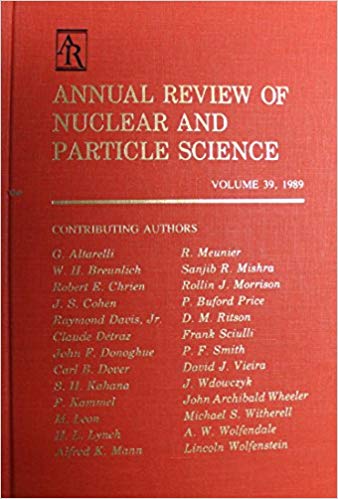The Nuclear Legacy Today of Fukushima
IF 8.4
2区 物理与天体物理
Q1 PHYSICS, NUCLEAR
Annual Review of Nuclear and Particle Science
Pub Date : 2020-10-19
DOI:10.1146/annurev-nucl-101918-023715
引用次数: 1
Abstract
The accident at the Fukushima Daiichi Nuclear Power Station (FDNPS) following the Great East Japan Earthquake and the subsequent tsunami in March 2011 changed people's perceptions regarding nuclear power generation in Japan and worldwide. The failure to prevent the accident and the response to it had an enormous impact specifically on the communities close to the site but also across Japan and globally. In this review, I discuss radiation detection technologies, their use and limits in the immediate assessment and response, and improvements since then. In particular, I examine recent developments in radiation detection and imaging systems that, in combination with the enormous advances in computer vision, provide new means to detect, map, and visualize radiation using manned and unmanned deployment platforms. In addition to smarter and more adaptable technologies to prevent and minimize the impact of such events, an important outcome of this accident is the need for informed and resilient citizens who are empowered by knowledge and technologies to make rational decisions. The accident at FDNPS leaves a legacy concerning the importance of historical information, technologies, and resilience as well as challenges regarding powerful technologies that can provide substantial benefits to human society but that are also associated with risks of which we must be aware.福岛的核遗产
2011年3月东日本大地震后发生的福岛第一核电站(FDNPS)事故以及随之而来的海啸改变了日本乃至全世界人们对核能发电的看法。未能阻止事故的发生以及对事故的反应对核电站附近的社区产生了巨大的影响,对整个日本乃至全球都是如此。在这篇综述中,我讨论了辐射检测技术,他们的使用和限制在即时评估和反应,以及自那时以来的改进。特别是,我研究了辐射探测和成像系统的最新发展,与计算机视觉的巨大进步相结合,提供了使用有人和无人部署平台探测、绘制和可视化辐射的新手段。除了更智能、适应性更强的技术来预防和最大限度地减少此类事件的影响外,此次事故的一个重要结果是,需要有知识和技术的知情和适应力强的公民做出理性决策。FDNPS事故留下了关于历史信息、技术和复原力的重要性的遗产,以及关于强大技术的挑战,这些技术可以为人类社会带来实质性利益,但也与我们必须意识到的风险相关。
本文章由计算机程序翻译,如有差异,请以英文原文为准。
求助全文
约1分钟内获得全文
求助全文
来源期刊
CiteScore
21.50
自引率
0.80%
发文量
18
期刊介绍:
The Annual Review of Nuclear and Particle Science is a publication that has been available since 1952. It focuses on various aspects of nuclear and particle science, including both theoretical and experimental developments. The journal covers topics such as nuclear structure, heavy ion interactions, oscillations observed in solar and atmospheric neutrinos, the physics of heavy quarks, the impact of particle and nuclear physics on astroparticle physics, and recent advancements in accelerator design and instrumentation.
One significant recent change in the journal is the conversion of its current volume from gated to open access. This conversion was made possible through Annual Reviews' Subscribe to Open program. As a result, all articles published in the current volume are now freely available to the public under a CC BY license. This change allows for greater accessibility and dissemination of research in the field of nuclear and particle science.

 求助内容:
求助内容: 应助结果提醒方式:
应助结果提醒方式:


